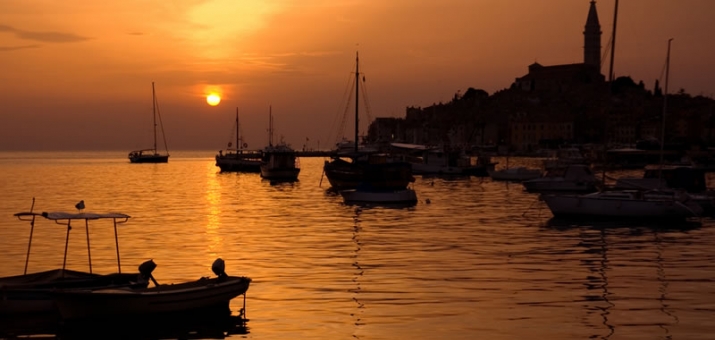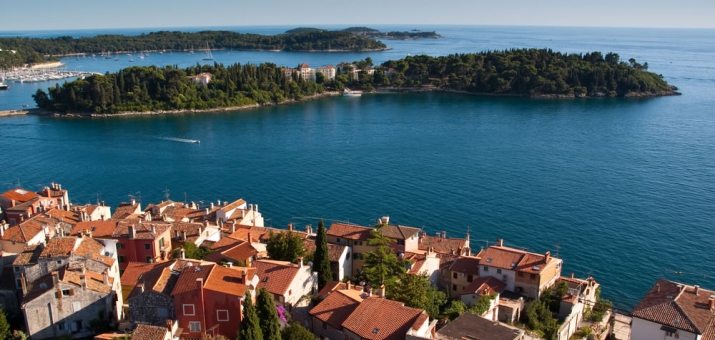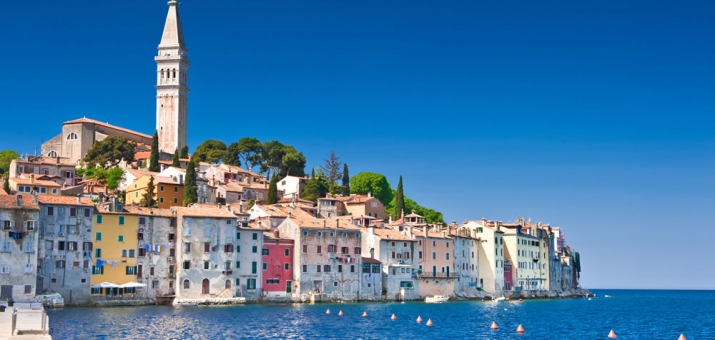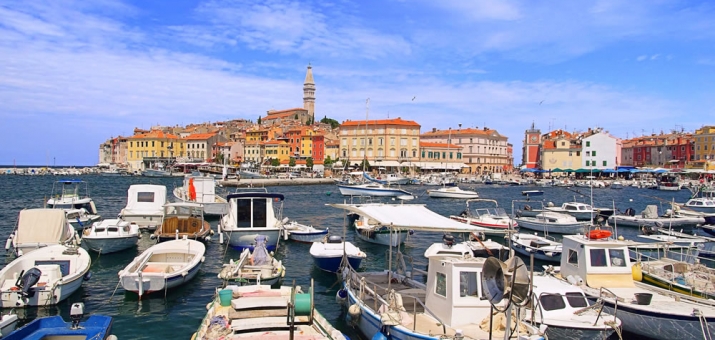Residence
Porta Antica ***
Apartments/ Rooms with sea view in historic center




Its uniquely beautiful landscapes, especially rich cultural-historical heritage, unbelievably branched out archipelago with approximately twenty islands and islets, its more and more developed offers, especially in the fields of gastronomy, catering, sports and recreation, entertainment, and in the last while its more and more sought after and esteemed agro and eco tourism in surrounding areas, serve to promote Rovinj, making it an attractive tourist destination that will remain deeply engraved in one's memory and will be a place where one will always be happy to return for a visit.
The myth about its exceptional beauty, amongst all else, earned it the flattering title, „The Dubrovnik of the North".
Including those located on the islands, Rovinj may boast over forty churches and chapels from various time periods, housing various styles.
Along with the imposing church of „Saint Euphemia", the city's most recognizable feature, a cathedral of sorts and most prominent peak of the core of the old city is the „Holy Trinity" chapel, a well-preserved Romanic monument from the 12th century that is shaped like a heptagon.
Because of its unique, architectonic structures and high level of preservation, UNESCO declared the old city core itself a monument as a whole.
During the transition from the 19th to 20th centuries, the high ecological consciousness of the „Hutterott" family, who at that time practically managed the city's natural resources and infrastructure, resulted in the „Zlatni Rt" project – today a protected park-forest, unique with its atypical charm where uncombinable plant life forms appear to be combined at first glance. „Zlatni Rt" is a cocktail of the Mediterranean and the Alps, and is the only park of its kind along the Adriatic, housing a priceless wealth of over one thousand domestic and foreign plant types..
Of Rovinj's many islands, the most striking is the island of „Saint Catherine". The promenade of this island is the most popular and is followed by the promenades along the central city waterfront and through the main city square.
As little as a few hundred meters of the sea separate this island from Rovinj and it is a true botanical feast with its 456 types of plant life recorded.
Rovinj is very well known as a city of painters and annually holds several high profile art manifestations that are traditionally held either outdoors or indoors in museums. The „Native Museum" with its art colonies stand out, as does the „Grisia" which is most certainly the greatest outdoor art manifestation in Croatia where rich awards are distributed and exhibitions are set up displaying the works of all generations of artists, ranging from established, professional painters to amateurs and children.
Numerous art galleries are located in the center of the old city core, in a street also bearing the name „Grisia". Aside from various art manifestations, the city puts forth great efforts to hold other manifestations as well, especially in the fields of music, literature, sports-recreation, and entertainment.
The famous "Rovinj Nights" are widely known for their wild and crazy atmosphere, especially rich gastronomic offers, lavish entertainment programs, and great fireworks displays. It is traditionally held every year towards the end of August.
Rovinj is surrounded by kilometers of attractive, pebble beaches on all sides. Because of their tidiness and content, the beaches of „Škaraba" and „Cuvi" cove stand out, followed by those near „Villas Rubin", „Valdaliso", and „Monsena"
(the latter two also being naturist), whereas absolutely all of the beaches associated with the park-forest „Zlatni Rt" are exceptionally beautiful.
And finally, some of the most beautiful sunsets on the Adriatic may be seen from the „free climbing" point of the „old rock quarry".
Rovinj is also distinct because of its restaurants such as "Blue", "Puntolina", "Monte", "Giannino" and "Veli Jože" that provide true gastro-ambient delight. Also located within the city are a number of wine cellars with autochthonous styles that serve meals that may be described in the same manner. Within the completely relaxed and natural atmosphere found in these wine cellars, one may break out into song at will. Even the expectations of young guests will be met in Rovinj within several city cafés and bars and several modernly equipped „Casino Bars"
Of the islands in the near vicinity of Rovinj, the largest is the popular „Red Island", made popular by its attractive beaches, sports-recreational content, and „Villa Rustica", a building from Roman times that has been turned into a restaurant that provides its guests with a unique ambient and offer. During the transition between the 19th and 20th centuries, the island was home to the well-respected „Hutterott" family of Austrian nobles.
Because of its jutted out position towards the open sea,
as well as its exoticness, „Saint John" island attracts attention and is the perfect destination for unforgettable family excursions, as are the suggestive islets „Sedam Dlaka" and „Figarola".
Particularly interesting are the „Ruđer Bošković" Institute for Marine Biology Research with its attractive aquarium, and the „Batana House" eco-museum, dedicated to an autochthonous fishing boat that is open to the public.
From a small and quiet fishing town, whose urban origins date back to the 3rd century, Rovinj has developed into a true Mecca for tourists over the years. Every year many guests travel to Rovinj, arriving from all parts of Europe. The population of Rovinj and its surrounding areas totals approximately fifteen thousand citizens.
Apartments/ Rooms with sea view in historic center
Studio / Rooms in historic center
Apartments / Rooms with sea view in the center
Studio / Rooms in historic center
Rooms in historic center
Studio in historic center